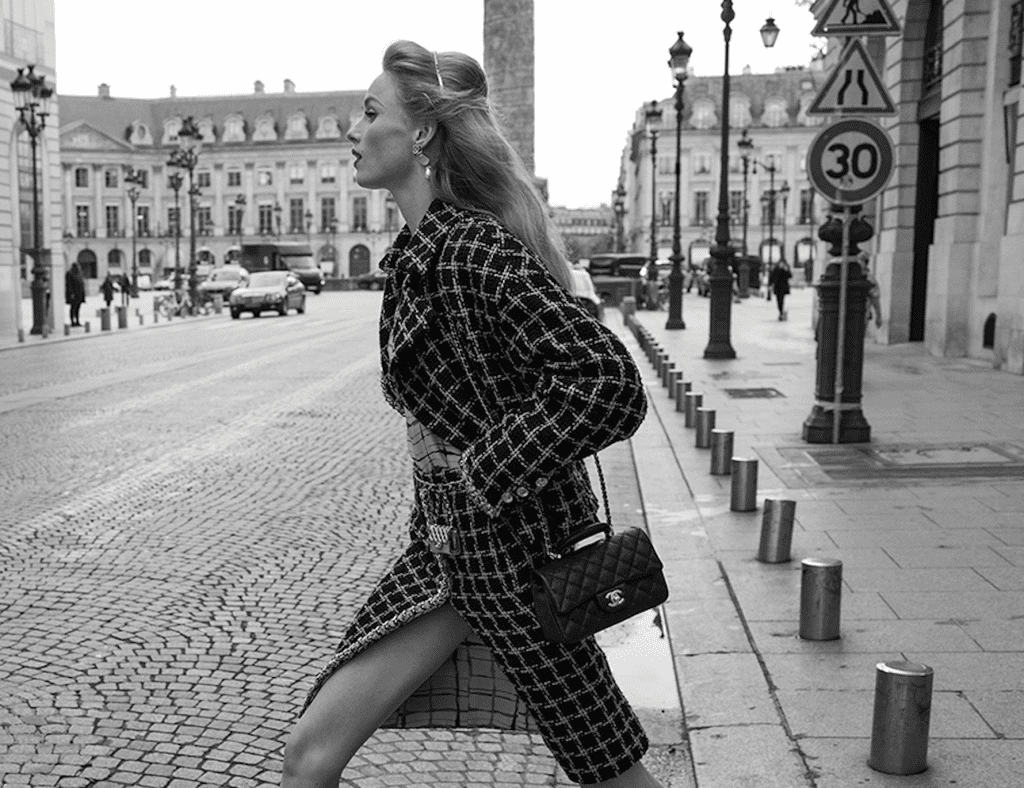Chanel’s president of fashion Bruno Pavlovsky is setting the record straight on recurring reports that the famed fashion house is implementing quotas on some of its bags, stating in an interview that Chanel has “not put new limitations on selling in any country.” Instead, Mr. Pavlovsky asserts, “We just had a big successful year, especially in Korea, and we don’t have enough products – especially for handbags.” That successful year – or better yet, two years – and the resulting “shortages” come as Chanel has doubled-down in its “loyal customers,” he told Fashion Network, and has “enjoyed double digit growth in each country with local customers, even if tourism is up and down” as a result.
Pavlovsky’s comments follow from reports first published by Korean media this fall that Chanel was implementing a restriction on sales, namely by placing a strict limit on the number of bags that consumers in certain markets can buy over a one-year period, potentially in an attempt to put a stop to widespread resale activities outside of Chanel’s carefully-controlled authorized retail channels. The Korea Times reported that on the heels of raising prices in February, July and September of this year, Chanel adopted a new policy in Korea in which “each customer can buy one Timeless Classic flap bag and one Coco Handle bag per year,” and had also put quotas in place for small leather goods, including wallets and pouches, assuming that “a customer wants more than one of the same model in the category.”
The move appeared to mirror an existing policy that is in place for brands like Hermès, which has notoriously limited the quantities that consumers can purchase of certain “quota” bags, namely, Birkin and Kelly bags, to two bags per calendar year in furtherance of a “very limited distribution strategy,” as well as for Rolex, which has similarly been “restricting per-capita purchases,” in the Korean market, at least, in light of raging demand and limited supply.
As for Chanel’s widely-reported-on price hikes, the most recent of which went into effect in November and which sent the price tags of its Classic Flap and 2.55 bags up as much as 15.5 percent, Chanel has consistently pointed to rising costs of raw materials and the desire to “avoid excessive price differentials between countries, in line with our commitments regarding price harmonization,” something that it has been working on for several years.
Back in April 2015, Pavlovsky spoke to the brand’s decision to begin harmonizing its pricing (something that many brands were not doing at the time), stating that it was aiming to ensure that prices do not fluctuate more than 10 percent above or below its global euro benchmark as part of an effort “to ensure the relationship we want to build with our customers.” Specifically, the Chanel executive said that by way of the pricing decision, Chanel was aiming to ensure that consumers are drawn in “by the brand and by the products and not just led by the price differentials” that routinely occur in different parts of the world due to currency fluctuations. (Price harmonization is also used as a tool to eradicate parallel imports, i.e., authentic goods that are obtained from one market (i.e., a country or economic area), and imported into another market and sold there without the consent of the trademark owner in order to benefit from price differentials.)
“It’s to prepare the brand for the next 10 to 15 years,” Pavlovsky said of the implementation of price harmonizing tactics at the time. “It’s more about the future than the past.”
And speaking of the future, in his interview this week, Pavlovsky says that in looking ahead to 2022, Chanel has “to be optimistic but also realistic, as we are facing challenging situations,” further stating that “2022 can be good from a business point of view but very difficult from a day-to-day point of view as you are dependent on sanitary conditions. It is a great unknown.”
One thing that does seem a bit clearer is the brand’s budding interest in a potential move into the metaverse at some point. Asked about the company’s adoption of various new technologies, Pavlovsky said Chanel was looking both at NFTs and at the metaverse: “Three years ago, everyone spoke of blockchain, and now we are using it throughout our entire manufacturing process. The day we are ready we will come with our own contribution to the metaverse.” It is not unreasonable to expect that Chanel will at some point roll out a proprietary metaverse venture in which it will maintain control over all aspects given the meticulousness with which it endeavors to handle all elements of the manufacturing and distribution chain for its products, including in a secondary market capacity.











